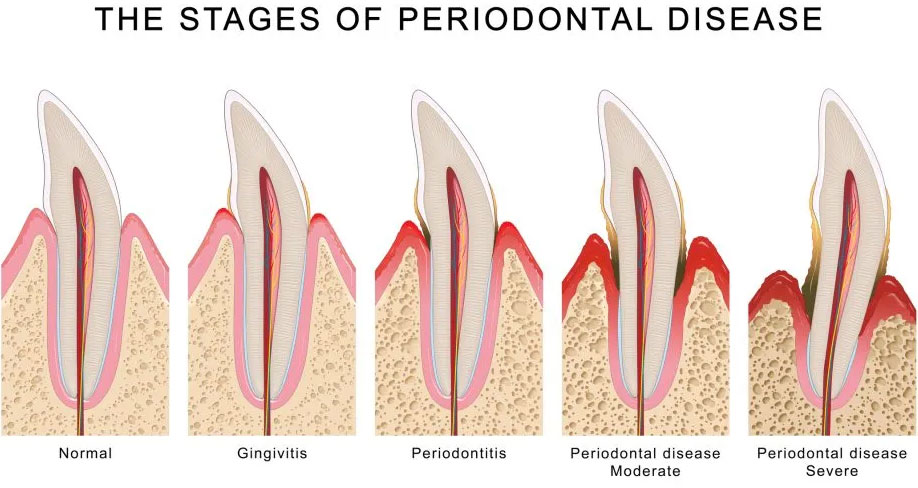Periodontal
About Us
Understanding and Conquering Periodontal Disease
Periodontal treatment focuses on preventing, diagnosing, and treating gum (periodontal) disease. The primary goal is to maintain healthy gums and prevent the progression of the disease, which can lead to tooth loss if left untreated.
Scaling and Root Planing (SRP) is a common non-surgical periodontal treatment. It involves a deep cleaning procedure to remove plaque, tartar, and bacteria from below the gumline, where normal brushing and flossing cannot reach. The process includes scaling, which involves the removal of plaque and tartar from the tooth’s surface and the pocket of the gums. Root planing smooths out the tooth’s root surfaces to promote gum reattachment and reduce the risk of bacteria recolonizing.
Periodontal maintenance is an ongoing follow-up treatment, usually performed after SRP or other periodontal procedures. It involves regular check-ups and cleanings to monitor the gum’s health, maintain a clean oral environment, and prevent the return or progression of gum disease. These maintenance visits may be scheduled more frequently than regular dental cleanings, typically every three to four months, depending on the individual’s periodontal condition.
Both scaling and root planing and periodontal maintenance are crucial aspects of periodontal therapy to help preserve healthy gums and prevent further complications associated with gum disease, ensuring the long-term health and stability of your teeth and overall oral health.
Stages of Periodontal Disease
- Gingivitis: This is the initial stage of gum disease and is characterized by inflammation of the gums (gingiva). It is usually caused by plaque buildup along the gumline, leading to red, swollen, and bleeding gums. Gingivitis is reversible with proper oral hygiene and professional dental cleanings.
- Early Periodontitis: If gingivitis is left untreated, it can progress to early periodontitis. In this stage, the infection begins to affect the supporting structures of the teeth, including the bone and ligaments. Patients may experience gum recession, pocket formation (spaces between the gums and teeth), and early signs of bone loss.
- Moderate Periodontitis: As periodontitis advances, the bone loss becomes more significant, leading to increased pocket depths and further gum recession. Teeth may start to become loose, and there may be visible changes in the bite or how the teeth fit together.
- Advanced Periodontitis: This is the most severe stage of gum disease, with extensive destruction of the supporting structures of the teeth. Significant bone loss occurs, leading to tooth mobility and potential tooth loss. In advanced periodontitis, tooth extraction and other advanced treatments may be necessary to manage the condition effectively.
It’s essential to note that the progression of periodontal disease can vary from person to person, and early detection and intervention are critical in preventing further damage. Regular dental check-ups and professional cleanings can help identify and address gum disease at an early stage, increasing the chances of successful treatment and maintaining optimal oral health.
While our team possesses the knowledge and expertise to address any dental problem, we understand the importance of continuous learning and staying at the forefront of advancements in dentistry. By constantly expanding our knowledge and honing our skills, we ensure that our patients receive the highest quality of care using the latest techniques and technologies.







